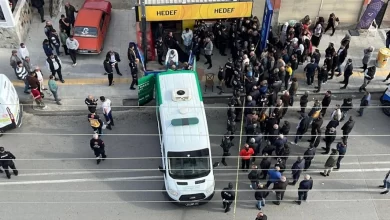
In Anavarza, known as the “Invincible city” in history, standing out with its magnificent gate and ramparts as well as the first double-lane road of the ancient world, it is tried to shed light on history with seasonal excavations.
The season excavations in the ancient city of Anavarza, which has a history of about 2,000 years, were carried out by Cukurova University, Faculty of Arts and Sciences, Department of Archeology, Dr. Under the chairmanship of Faculty Member Fatih Gulsen, under the supervision of the Ministry of Culture and Tourism and the General Directorate of Cultural Heritage and Museums, 24 workers, 2 expert archaeologists and a scientific team of 30 people continue.
Seasonal excavations continue in the amphitheater section of the ancient city, which attracts attention with its gate, double lane road and ramparts, called the “Arch of Victory”, which was built to commemorate the victory of the Romans against the Persians in the 3rd century.
In the excavations in the amphitheater, traces of gladiator tombs who fought each other or with predators in the arena in ancient Rome were found.

“We will probably also find the skeletons of gladiators”
Excavation Director Fatih Gulsen told Anadolu Agency (AA) that seasonal excavations continue in the amphitheater at the southernmost tip of the ancient city.
Stating that the amphitheater unearthed in Anavarza also hosted gladiator encounters, Gulsen said:
“With the acceleration of the excavations, we reached new findings in the amphitheater. We have a very large 63 meters in diameter amphitheater building at the tip of the southernmost cliffs of the city. Many new structures can be unearthed during these continuous works. One of these new structures is the gladiator’s fighting area. It is an amphitheater building, which is described as an amphitheater. We know that not only gladiator fights, but also water sports, games and festivals were held here. It is one of the rarest examples. Literary works such as comedies and tragedies were exhibited in theaters at that time. Gladiator fights were held in the amphitheater, of which there are only four examples.In fact, although it does not fit the Anatolian identity and culture, it is a feature that reflects a bit more Roman culture.So we know that there were gladiators here and that gladiator warriors fought in this building. Many gladiators in and around the amphitheater We started to come across rune burials. We will probably find the skeletons of gladiators in the works carried out in the necropolis area together with the theater.”
Gulsen stated that excavations continue in the area and they are trying to reach new information that will shed light on the history of the region.

Anavarza’s history has been published
Fatih Gulsen noted that the book describing the historical features and structure of the Ancient City of Anavarza was completed under the leadership of the Adana Governor’s Office, and said, “A four-volume scientific book named Anavarza has been revealed. The book was published by an international publishing house. The book was collected in 4 volumes with the collection of 68 scientific articles accompanied by 95 researchers. From the geography of Anavarza to its archeology, history and agriculture, all studies related to this city that you can think of are gathered in this book.” used his statements.
Source: AA
You may be interested in:







I would like to know when the Walls surrounding the Roman city were built And for what purpose at that date.